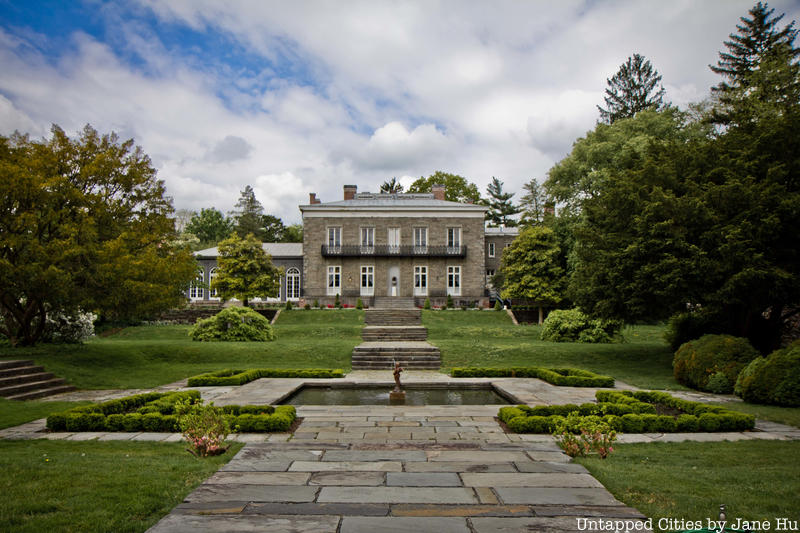
Welcome back to our column on the oldest buildings in each of New York City’s five boroughs – following looks into Manhattan, Brooklyn, and Queens. The Bronx is home to some of the most stunning buildings, with varied and interesting stories to tell, from Edgar Allen Poe’s final home, to colonial era manors, and an old snuff mill. Several of the buildings mentioned were used by troops during the Revolutionary War.
Without further ado, here are the top six oldest buildings in the Bronx:
1. The Van Cortlandt House, 1748
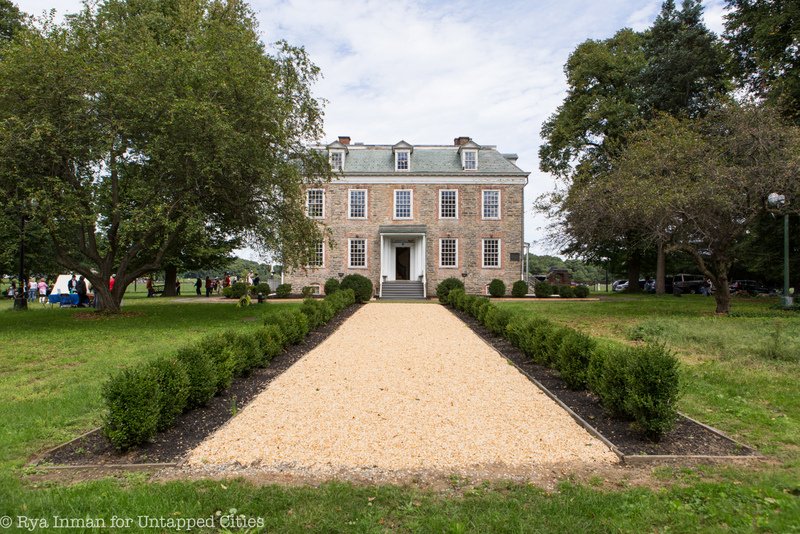
The Van Cortlandt House, also known as the Frederick Van Cortlandt House, holds the title of the oldest surviving building in the Bronx (though it is nearly a century younger than the oldest building in Queens). It was built with fieldstone, in a traditional 18th century Georgian style, two and a half stories tall and with double-hipped roof. Frederick Van Cortlandt began to build the house in 1748, but he died before the house was completed. During the Revolutionary War, the house was used by Rochambeau, Marquis de Lafayette and George Washington.
The Van Cortlandt family lived in the house for 140 years until, in 1887, the property was sold to the City of New York. It’s transformation into New York City’s first historic house museum is an interesting one: The National Society of Colonial Dames in the State of New York, who wanted to make the house a public museum, had to find a way to circumvent the fact that there was no provision in New York State Law allowing the stewardship of a publicly owned building by a private organization. By 1896, after a year of campaigning, the Society inspired Chapter 837 of the New York State Legislature, transferring custody of the Van Cortlandt House over to them, and the house became a museum a year later. It continues to work as a museum today and is located within Van Cortlandt Park, one of the city’s largest parks.
2. The Valentine-Varian House, 1758
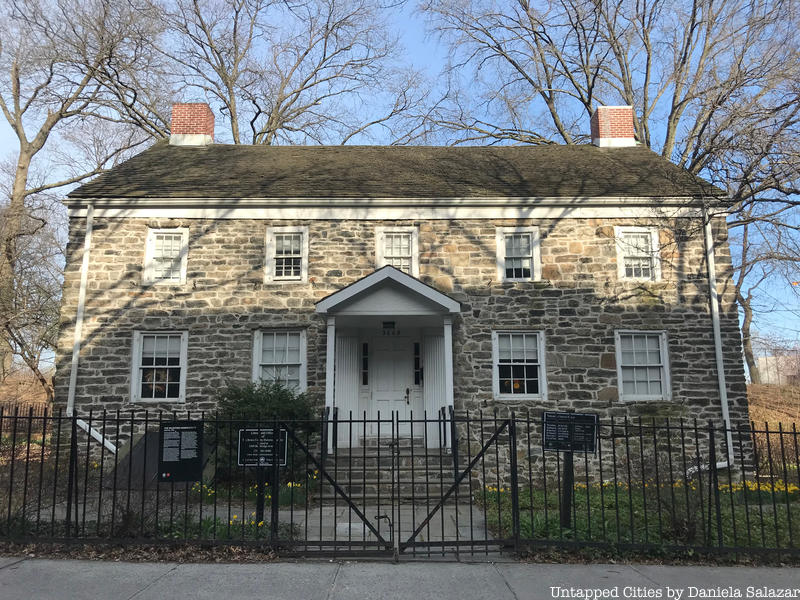
The Valentine-Varian House, built in 1758, is the second oldest house in the Bronx and oldest remaining farmhouse in the borough. It is also designedx in a Georgian style, with evenly placed windows, two matching chimneys, a gabled roof and interior rooms that mirror each other across a central hallway. During the Revolutionary War, the house was occupied by British, Hessian and American troops. In 1792, the Valentine family sold the property to Isaac Varian, whose grandson would become the 63rd Mayor of New York City.
In 1965, the house was donated to The Bronx County Historical Society and was moved diagonally across the street to its current location (one of the numerous historical buildings in New York City that have been moved). The move was a complicated operation that took two days and required a 48-wheel dolly. The Valentine-Varian House now operates as the Museum of Bronx History.
3. The Edgar Allen Poe Cottage, 1812
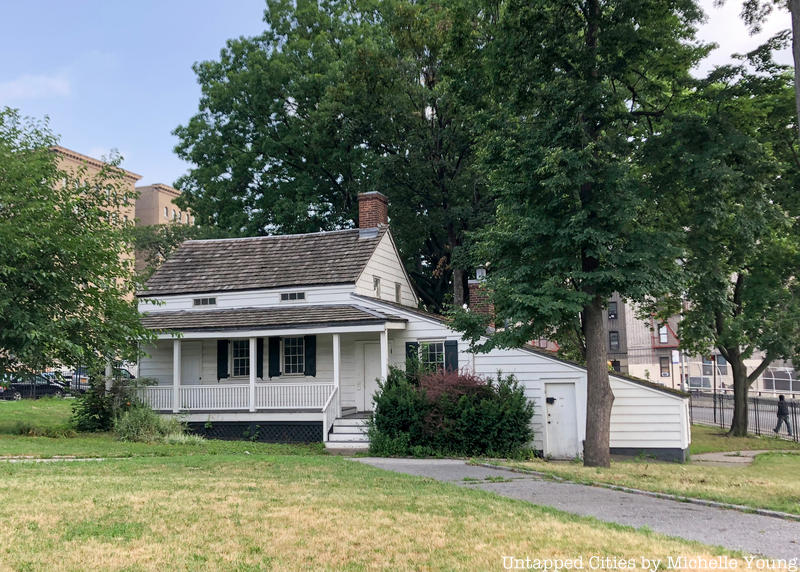
The Edgar Allen Poe Cottage, built in the beginning of the 19th century, was the final home of the great American writer Edgar Allen Poe. Poe, his ailing wife and his mother-in-law moved into the house in 1846. His wife was to die in 1847, and Poe’s death was to follow two years later. It was in this cottage, a prime example of typical working-class houses of the time, that Poe wrote some of his most memorable works, including “Annabel Lee” and “The Bells”.
In 1913, the City of New York purchased the house, moved it to its current location at Poe Park and restored the building to what it was believed to have looked like during Poe’s residency in the 1840s. The building has also been refurbished, holding such timely pieces as a rope bed and a wicker rocking chair believed to have belonged to the writer and his family. The cottage is now a museum open to the public.
4. The Bartow-Pell Mansion, 1836

The Bartow-Pell Mansion’s history begins in 1654, when Thomas Pell bought 50,000 acres of land from the Lenape tribe. By the end of the Revolutionary War, the Pell estate amounted only to 220 acres and was purchased by Pell relative Robert Bartow. Bartow started to build the three-story, Greek Revival mansion, which has a freestanding spiral staircase, in 1836. By 1842 the house was completed, and it remained with the Bartow family until 1888, when the property was purchased by the city.
In 1914, the house was leased to the International Garden Club, now the Bartow-Pell Conservancy, and the house underwent one of the earliest restorations in the country. The architectural firm Delano & Aldrich was hired to restore the building and design a formal garden, which was completed in 1916. The Bartow-Pell Mansion is now a national landmark as well as a public museum.
5. The Lorillard Snuff Mill, 1840
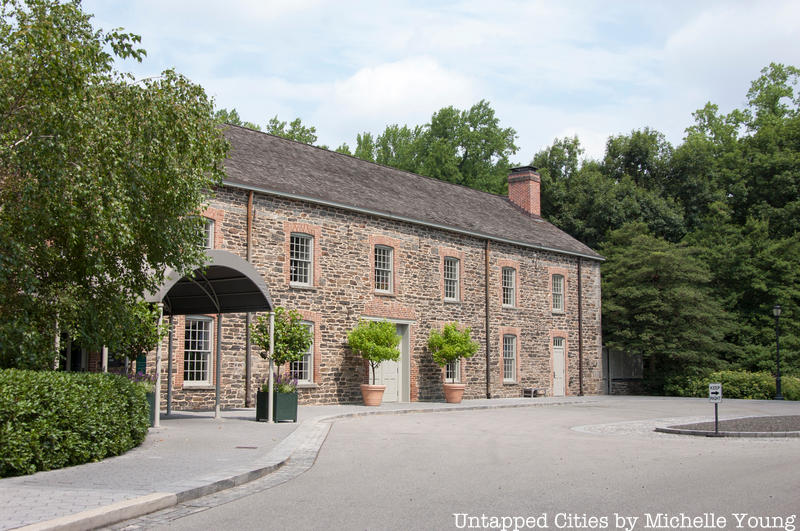
The Lorillard Snuff Mill, the oldest existing tobacco manufacturing building in the United Sates, is believed to have been built around 1840. It’s an example of a vernacular type of utilitarian building, with stone walls and a brick trim. The mill overlooks the Bronx River, and water from the river powered the mill’s machinery, grinding tobacco into the smokeless, powdery substance known as snuff.
The mill was in operation until 1870, when the Lorillard family moved their firm to a new location, and the City of New York bought the property 1884. The land was transferred to the New York Botanical Gardens in 1915, and after a 10.5 million dollar restoration in 2010, the “Old Snuff Mill” is now used by a catering facility. Nearby, on what was also originally Lorillard family property, is the Edible Academy of the New York Botanical Garden, which opened its redesigned facility to much fanfare last year.
6. St. Ann’s Episcopal Church

The first church in The Bronx, St. Ann’s Episcopal Church was built in 1840, and was originally founded by the Morris family. It was donated by Gouverneur Morris Jr. as a family monument (the Morrisania Memorial), and serves as his resting place, along with other notables, such as Louis Morris. The church itself, which sits on 295 St. Ann’s Avenue in Mott Haven, is named after Ann Morris, a descendant of Pocahontas.
Architecturally speaking, St. Ann’s is a fieldstone building, built in the Gothic Revival style with a Greek Revival style tower. The complex it sits in was added to the National Register of Historic Places in 1980, and designated a New York City landmark in 1967. It includes a stone parish house that was added in 1916, a graveyard housing the Morris family crypt, and a late 19th-century Sunday School and gymnasium building. Today, St. Ann’s operates as a hub for community events, including an after-school program. It’s also home to the only swings in the neighborhood, and a “really good jungle-gym.”
7. The Wave Hill House, 1843
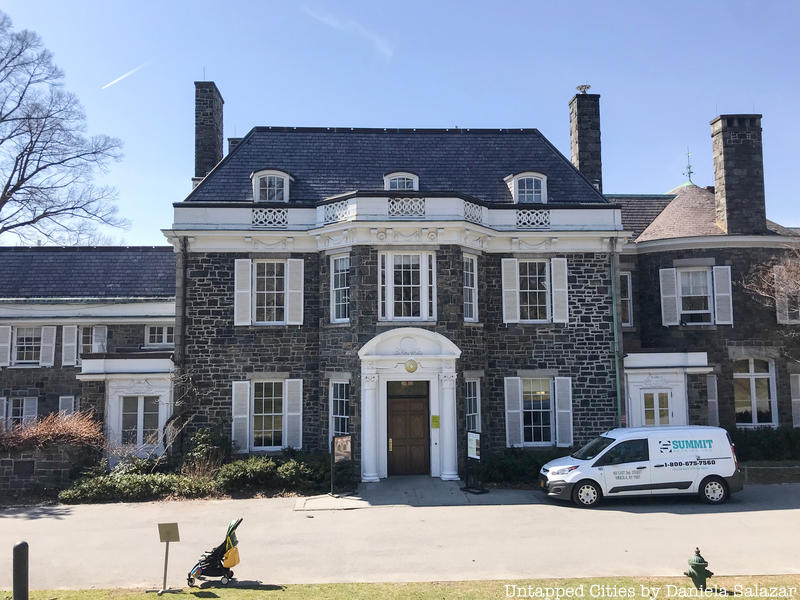
The Wave Hill House, built in 1843, is part of a larger, 28-acre estate with lush gardens, slopes overlooking the Hudson River, and an unencumbered, sweeping view of the New Jersey Palisades. The property currently works as a public garden and cultural center, but throughout its history Wave Hill has been the home to a number of well-known figures.
The Greek Revival-style house, originally made of gray fieldstone, was owned by the famous publisher Henry Appleton from 1866 to 1903. During his time at Wave Hill, Appleton brought renown scientists such as Thomas Henry Huxley to the estate. Theodore Roosevelt’s family rented the estate during the summers of 1870 and 1871, and Mark Twain leased the property from 1901 to 1903. The land was also purchased in 1903 by George W. Perkins, a partner of J.P. Morgan.
Next, check out The 7 Oldest Buildings in Manhattan, The 11 Oldest Buildings in Brooklyn, and The 8 Oldest Buildings in Queens.





